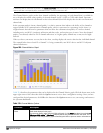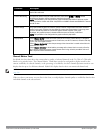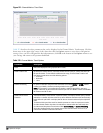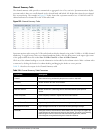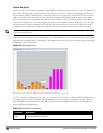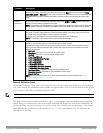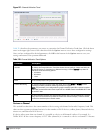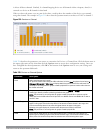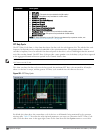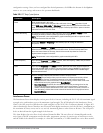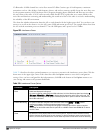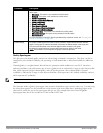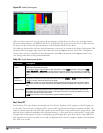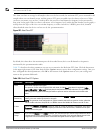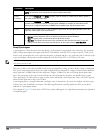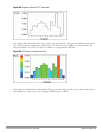
597 | Spectrum Analysis DellPowerConnectW-SeriesArubaOS6.2 | User Guide
Parameter Description
l WiFi (AP)
l Microwave
(This option is only available for 2.4 GHz radios)
l Bluetooth
(This option is only available for 2.4 GHz radios)
l Fixed Freq (Others)
l Fixed Freq (Cordless Phones)
l Fixed Freq (Video)
l Fixed Freq (Audio)
l Freq Hopper (Others)
l Freq Hopper (Cordless Network)
l Freq Hopper (Cordless Base)
l Freq Hopper Xbox
(This option is only available for 2.4 GHz radios)
l Microwave (Inverter)
(This option is only available for 2.4 GHz radios)
l Generic Interferer
NOTE: For more information on non-Wi-Fi device types detected by a spectrum monitor, see
"Working with Non-Wi-Fi Interferers " on page 606.
FFT Duty Cycle
The FFT Duty Cycle chart is a line chart that shows the duty cycle for each frequency bin. The width of the each
frequency bin depends on the resolution bandwidth of the spectrum monitor. The spectrum analysis feature
considers a frequency bin to be utilized if the detected power in that bin is at least 20 dB higher than the nominal
noise floor on that channel. The FFT Duty Cycle provides a more granular view of the duty cycle per bin as opposed
to the aggregated channel utilization reported in the Channel Metrics chart.
NOTE: This chart is not available for W-AP120 Series or W-AP68 access points. A hybrid AP on a 20 MHz channel will see 40 MHz
Wi-Fi data as non-Wi-Fi data.
This chart can show the duty cycle over the last second, the maximum FFT duty cycle measured for all samples
taken over the last N sweeps, and the greatest FFT duty cycle recorded since the chart was last reset.
Figure 221: FFT Duty Cycle
By default, this chart shows the current duty cycle for devices on all channels being monitored by the spectrum
monitor radio. Table 222 describes the other optional parameters you can use to customize the FFT Duty Cycle
table. Click the down arrow in the upper right corner of this chart then click the Options menu to access these



